In celebration of the summer season that began on June 22, I want to revisit the two part nocino event that I held in Los Angeles in 2022.
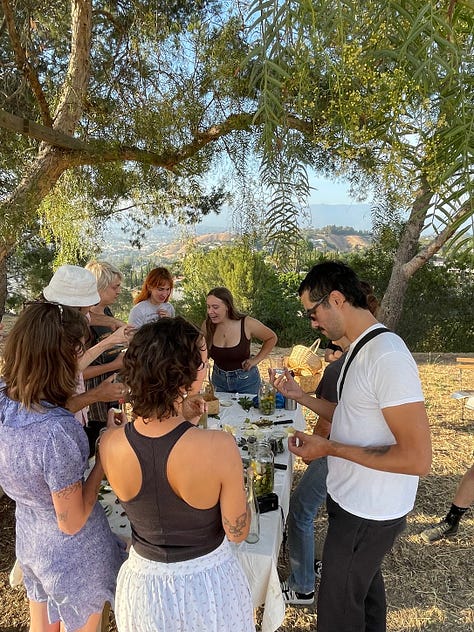

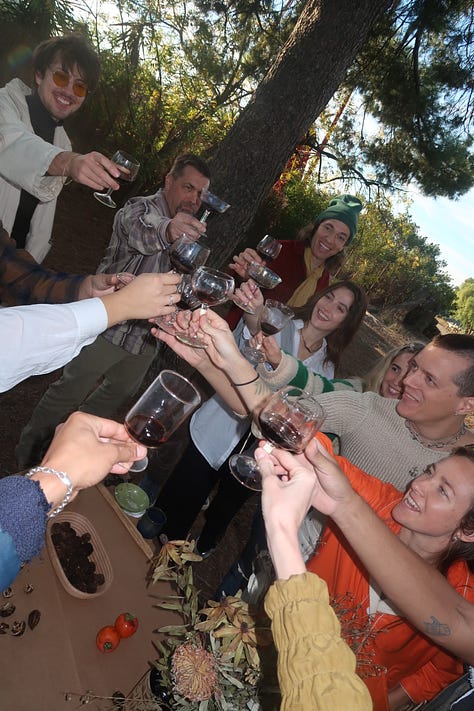
Nocino is an amaro. Amaro means bitter in Italian and it is the name of the tallest peak in the Majella mountain range — Monte Amaro. This is not a coincidence and I will write more about this connection.
Abruzzo has a very distinct amaro culture and nocino is a classic in the canon of amari that line Abruzzeses’ liquor shelves. It is made from unripe walnuts, a high proof alcohol and a mix of other chosen aromatics depending on the recipe.
When you partake in making nocino, you are making an elixir that captures the light of the summer solstice — the longest day of the year — so that it can be enjoyed during the darkest parts of the year.
Reflecting on life at this very moment…
What is encompassing this seasonal shift for you?
This could be something you are working through now, a lesson, a word you can’t get out of your mind, maybe even something you are reaching for in the coming months.
I believe it is important to create your nocino with this intention, even if it something that you keep to yourself. Nocino needs at least eight months to macerate.
I remember sitting at Valentine in Phoenix, Arizona when I decided it was time to push myself to host a nocino workshop.
At the time it felt like a scary idea, but it was what I really desired.
I don’t know it it was the espresso martini or divine intervention but I felt an overwhelming push to reach for this so I sat at the bar that night writing away in my journal all my thoughts. I looked up from my writing and saw jars of nocino from macerating on their shelves. Valentine is one of the restaurants that left a special imprint in my memory during my time beekeeping in the Southwest. It absolutely deserves a visit if you are in Arizona anytime soon.
June 8, 2022
I remember that spring The Capri Club opened in my neighborhood and everyone was suddenly talking about an amaro like it was this hot new, unknown thing that just stepped on the scene. I laughed seeing a bunch of coetanei paying $6 to sip a tiny Vecchio Amaro del Capo. I felt pretty sure that I could convince my friends to come make nocino with me while everyone else was trying to get a table at the Capri Club.
I chose to host the nocino events at my beloved apiary aptly named “The Station.”
The Station at the time was one of my proudest professional accomplishment. I essentially created the “office” of my dreams. I tended to around fifty beehives in a black walnut forest that had one of the best views of Los Angeles.
On a clear day I could see the Pacific Ocean, Long Beach and the Hollywood sign.
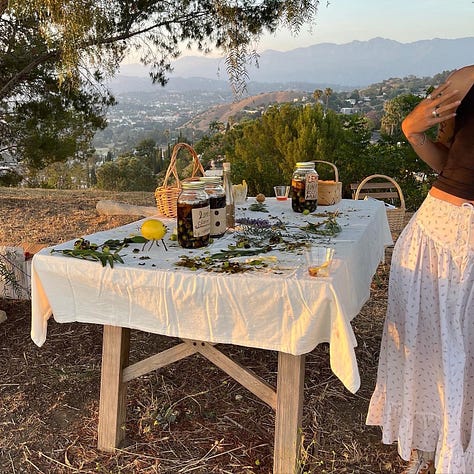
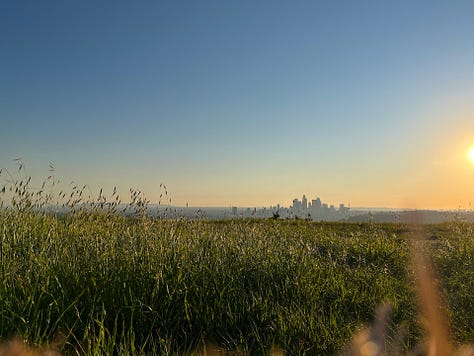

It was such a privilege to find all these little green corners of Los Angeles and return to them after a full day of beekeeping on rooftops in the city.
The idea to make nocino originally passed through my mind one day while beekeeping at The Station. I looked up and realized I was surrounded by walnuts. I asked the land owner if I could harvest some and he said “take all that you want.”
I knew that nocino was traditionally made on the night of San Giovanni, but for the Los Angeles climate that would be far too late. The walnut drupes were already starting to harden by the end of May. It is alarming to witness how now even in Italy the date for making nocino gets further and further away from San Giovanni because the temperatures are rapidly rising and causing plants to mature faster.
An anecdote illustrating why we continue to lose these rituals and relationships to nature.
A reminder that we are in trouble.
Regardless, I asked myself why I thought it was important to ask around twenty close friends to give me three hours of their time on a Wednesday. The simple act of offering people time in a green space felt like good enough reason, but I really wanted guests to leave being able to identify walnut trees.
To feel like they have a connection to the plant.
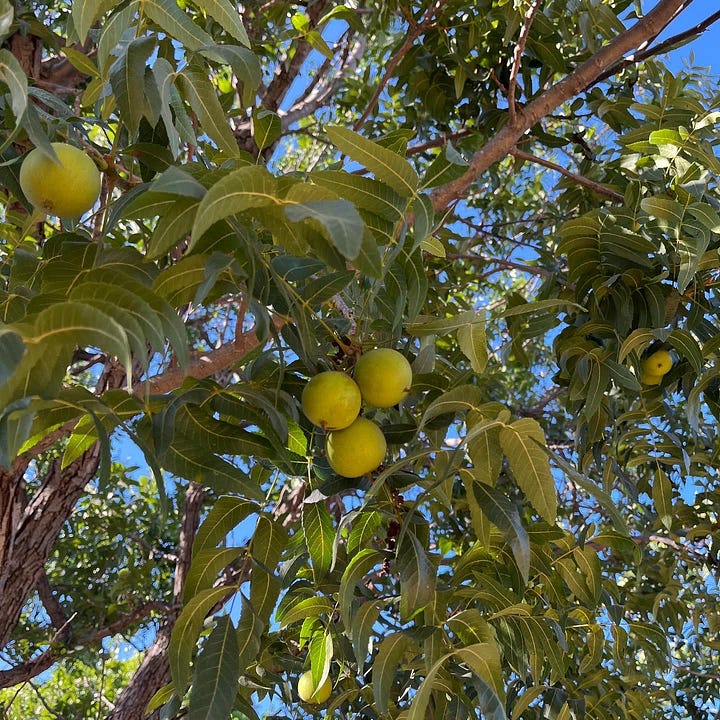
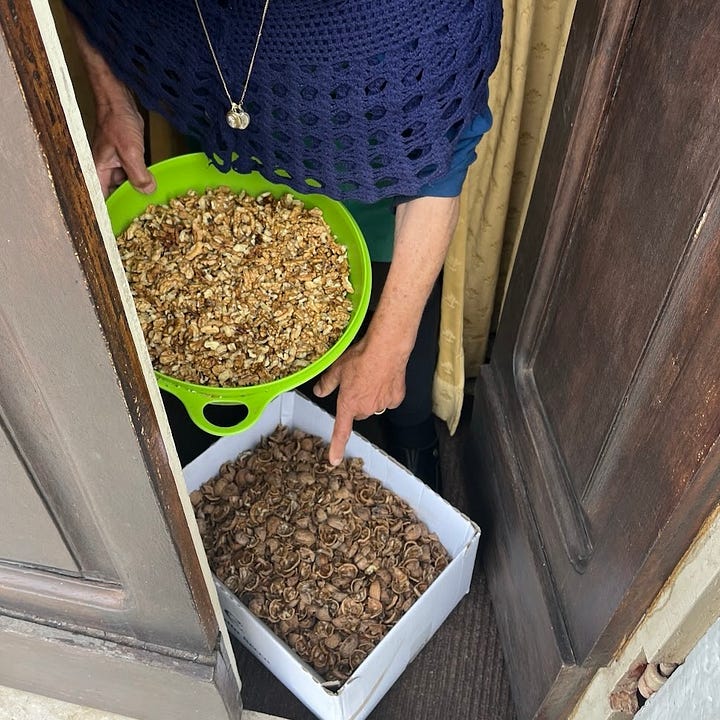
Walnut trees are allopathic, meaning they have specific mechanisms to prevent growth around them. Jugalone is a natural herbicide produced by the roots of the walnut tree to eliminate competition in its tree canopy. You can identify a black walnut because other plants don’t grow in a 50 foot radius around the tree.
Walnuts can live for up to 150 years. They become sexually mature and start producing fruit after 13 years. Walnut trees are wind pollinated. Botanically speaking, the walnut tree’s fruit is actually not a nut but a drupe.
Medieval recipes for nocino specify that women are the best for picking walnuts. The recipe calls for barefoot virgins to pick walnuts under the light of the moon while the dew is still fresh on the drupe.
The summer solstice is relevant because it is during this time of the year that the fruit of the walnut has its greatest fragrance, tissues plum with lymph and cells rich in essential oils. All that summer light captured.
We set out to collect walnuts and made five different versions of nocino, all meant to be tasted at the bottling event.
I put out walnut ink and labels so that everyone could decorate their bottle.
The bottle would become the invite to the second bottling event. It was so fun running around to friend’s houses that summer and seeing their empty, decorated nocino bottles waiting for the fall.

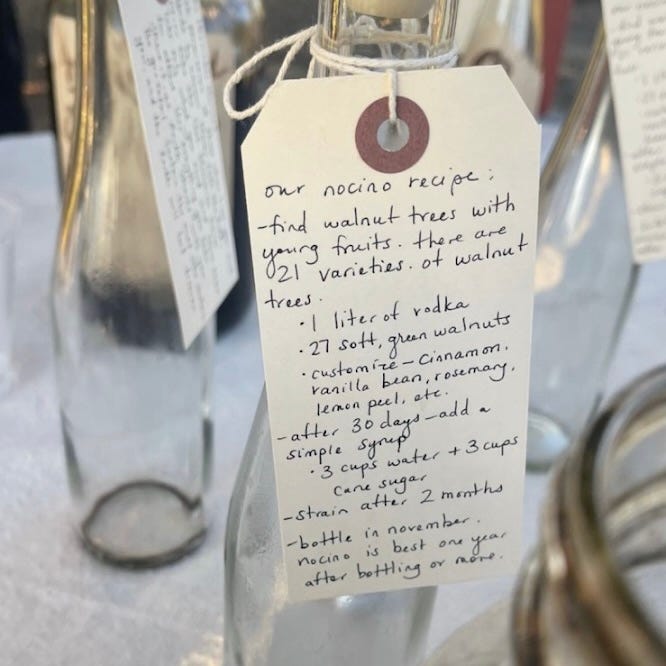
I would get photos from friends telling me they saw a walnut tree on their travels and decided to make nocino to compare to the nocino they made in Los Angeles.
Proof that the nocino event was a ‘success’ in my book.
November 8, 2022
By the time the bottling event came around, I had a list of people asking me if they could taste this famous nocino. Leading up to the bottling I met a lot of new people and a few would go as far to mention “oh yeah, you’re the beekeeper, we have been hearing about this nocino.”
It felt sacred to keep the original group for the bottling because we had so vulnerably shared our thoughts for the summer solstice. I knew it would be important to close the ritual together.
I decided to open the later portion of the event to the public so people could taste a bit of the nocino even if they were not originally involved in the process.
I wanted our first taste of nocino to coincide with the festival of San Martino. In Italy, San Martino is the day that “ogni mosto diventa vino,” which means “all grape must becomes wine.”
It is a happy moment celebrated in Abruzzo. We gather, drink wine and eat delicious food.
We gathered one last time at The Station to bottle our nocino and do just as the Abruzzese do for San Martino. We tasted the five different blends and deliberated which was our favorite and why. We all went out into the world with our bottles of nocino as a memory of the time we spent together.
That winter we were all obsessed with drinking a little bit each time we got together, although some were saving theirs for a special day. It does get better with “time.”
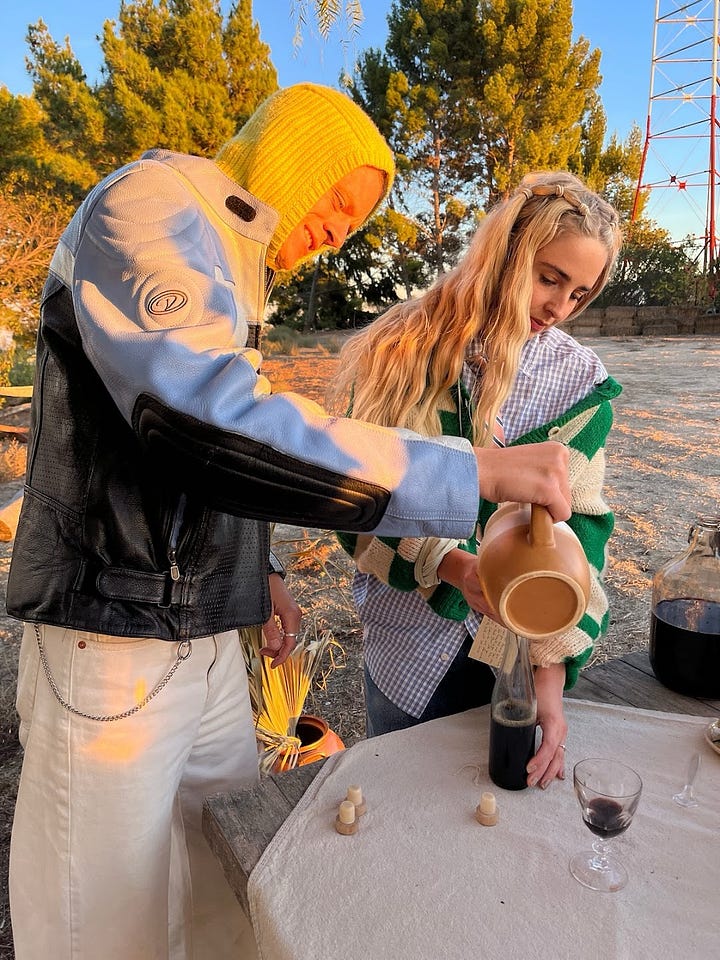
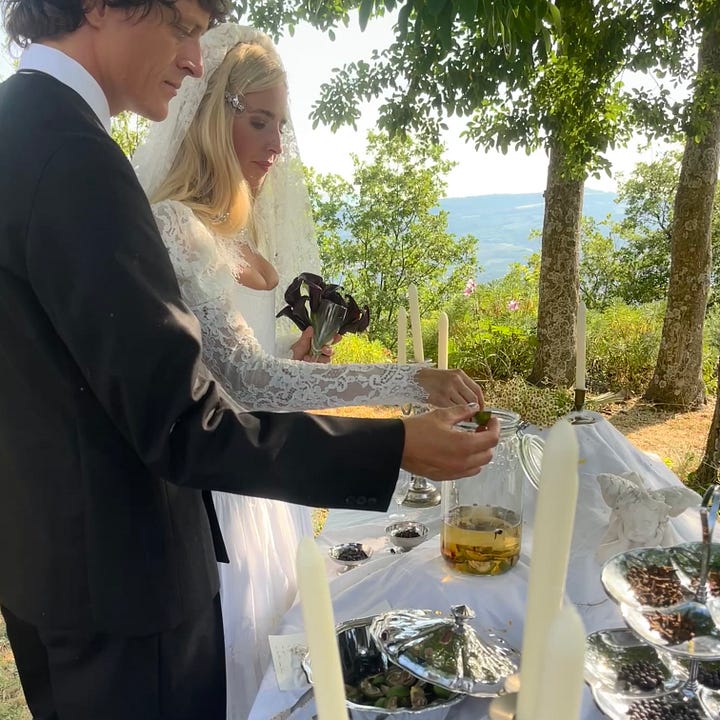
A lot happened between June and November that year. My car was stolen and I decided to leave my job. These two big changes helped me move back to Italy.
The nocino events felt like a catalyst or invitation calling me to do more things in line with my desires. They helped me get back to what I promised myself to do back in 2017 — essentially start setteuarciate.
I still have my bottle of nocino from 2022. It sits on the shelf in my now studio.
I don’t know if or when I will ever drink it but I imagine it is only getting better each day as I deepen into my life now creating things I could only dream about in 2022.
How to gather and create your own nocino ritual
Identify your walnut trees — there are around twelve species that lend themselves well to nocino
Check to see if the drupe is still soft enough for a knife to run through without much force. If so, you can make nocino.
Set a date with friends and invite them to pick walnuts with you before they harden.
When picking walnuts, ask your friends what word they are invoking for the summer season!
Get bottles and mason jars — make labels if you are feeling artistic.
Set up a table to process the walnuts. You will need to gather liquor and aromatics that you would like to add to your recipe.
Be mindful that walnut stains and it is a natural dye that doesn’t need a mordant so it will never come out of the fabric it touches.
You could also take advantage of this element and dye a few pieces with walnut if you want beautiful brown textiles.
Set aside a spot to keep your nocino vessels until the fall - they like to be shaken every so often so be sure to visit them.
Set a date to strain the walnuts and add sugar or honey to sweeten the elixir — this is usually 30 days after the initial preparation.
Set a date to bottle with your friends — aim for November or December.
This is a nice moment to reflect on all that happened since the first event — you can invite new friends to partake in a tasting
Process
1 liter of vodka
27 green walnuts, cut in half
aromatics: rosemary, lemon peel, cinnamon, juniper, vanilla bean, etc.
After 30 days…
Make a simple syrup by dissolving 3 cups sugar in 3 cups water
During the nocino ritual
Harvest the walnuts gently from the tree. Cut them in half and put them in the vodka. Add other aromatics that you choose. Shake the mixture every day for two months.
After two months, strain the liquid from the walnuts and add simple syrup. Store the nocino in a dark place until it is ready to bottle.




My favourite ritual! I was just writing about how Italians are going to need to rethink San Giovanni as the reminder to make nocino. Maybe Sant'Antonio (June 13) or Sant'Urbano (May 25!) are better for climate change. I've noticed our walnuts are definitely too hard to cut through the past few years.
Wonderful read Mia!!